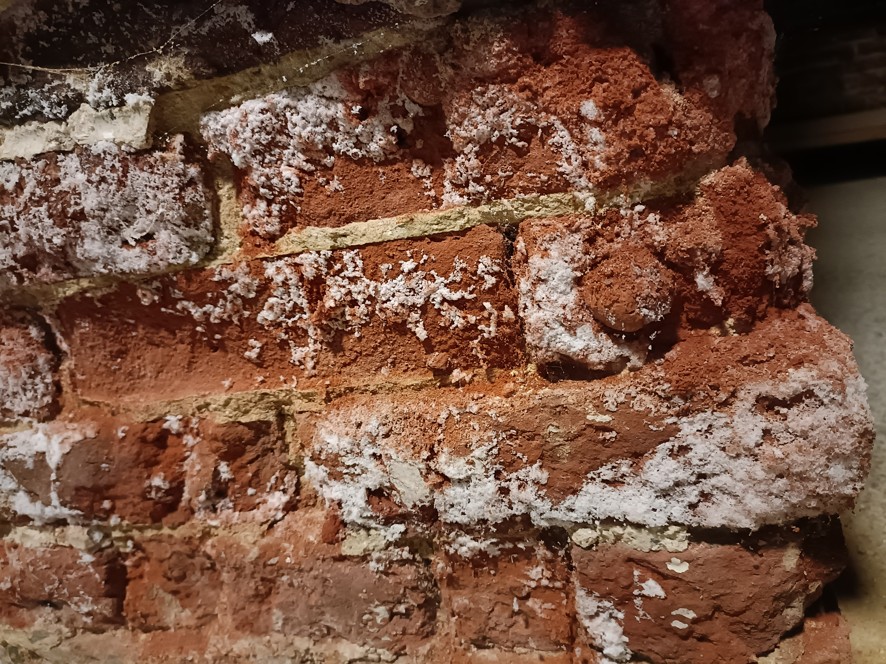Moisture and salt analysis
We investigate moisture problems and the presence of harmful salts in building materials and structures. Among other things, we determine the actual and hygroscopic moisture content, salt content and chemical composition.
These parameters are essential to correctly identify causes of damage and enable thoughtful interventions. Thus, further deterioration can be prevented and interventions are planned efficiently and sustainably.
Prevention is better than cure: early detection helps avoid long-term damage and high repair costs.

Surface hardness
Using the Drilling Resistance Measurement System (DRMS), we determine the hardness profile of brick or natural stone.
This method provides insight into the degree and depth of weathering of the material, and allows evaluation of the effectiveness of consolidation measures.
Pathology description
Systematic identification of pathology, supported by thorough documentation, provides the basis for reliable damage analysis. This helps to correctly understand and target the impact and causes of infestations – such as moisture stress, contamination, fire or biological colonization.
We support our analysis with both macro- and microscopic investigations and use a wide range of (micro)destructive and non-destructive techniques. These include Karsten tests, color measurements, ultrasonic measurements, advanced moisture measurements and/or mineralogical analyses.

-
1
Customized consultation and research plan
In consultation with the parties involved, we discuss the research question and the context of the project. Based on this, we establish a testing program tailored to the material type, the desired insights and the level of intervention feasible at the site.
-
2
Measurements and sampling
We perform targeted measurements and sampling. These can range from moisture and salt analyses (topical and hygroscopic), DRMS hardness measurements or (micro)destructive and non-destructive tests, such as Karsten tests, color measurements or ultrasonic techniques.
-
3
Diagnosis and interpretation
We analyze the collected data in relation to material behavior and external influences. This is how we identify the cause of damage or the risk of future degradation - an essential step for sustainable decision-making.
-
4
Reporting and recommendations
The results are compiled in a clear report, with visual documentation, interpretation and practical recommendations. This supports both restorative interventions and preventive measures within restoration or maintenance.
